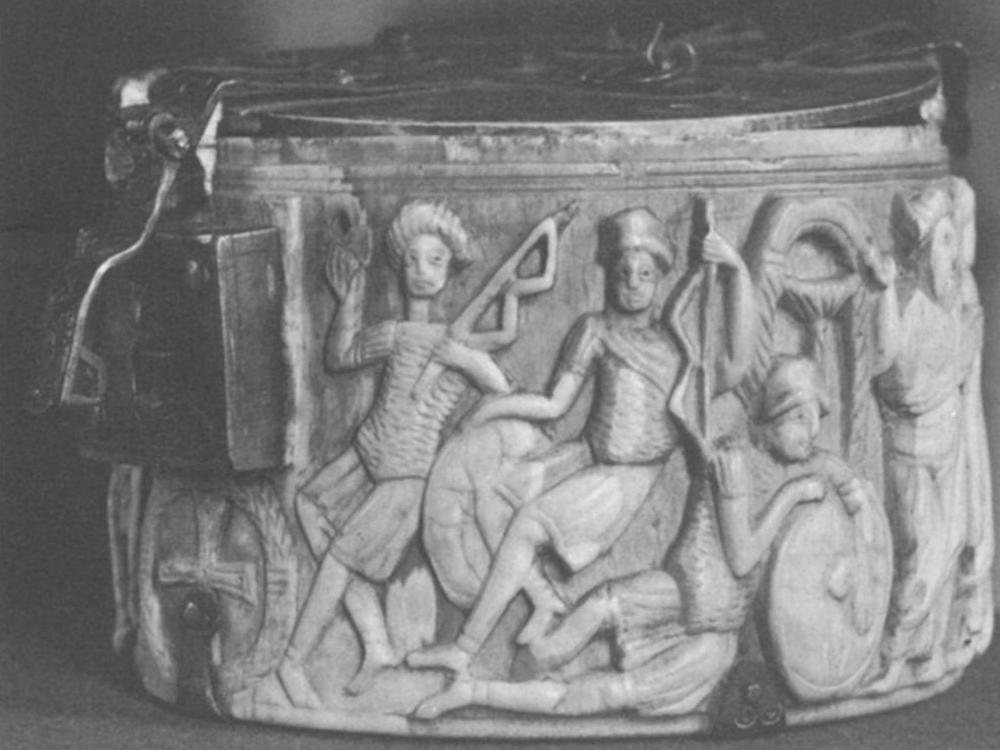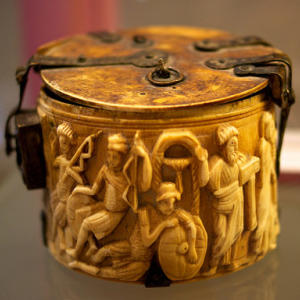
Amazon Audible Gift Memberships
Romano-Byzantine Soldiers on the
Sitten Pyxis
Ivory, 6th Century, Museum of Valere, Sitten



Dated in the sixth century, the pyxides are usually included in the group of ivories stylistically associated with the Murano diptych, with Wessel arguing for an Egyptian provenance, while Volbach prefers the Caucasus or Armenia.2
...
The soldiers on the Sitten pyxis, who recline gracefully or sit on either side of the lockspace, do not resemble those in the Syrian manuscript. Generally, in scenes of the visit to the tomb, soldiers are fewer in number, represented either asleep, agitated, or stunned, and if armed, without exception shown with spears.18 On the pyxis, the soldiers wear the scale lorica and high rounded helmet traditional for the Middle Eastern soldiers who served as auxiliaries in the Roman army.19 Two carry compound bows of the Scythian type, …
2. See W.F. Volbach, "Zur Lokalisierung frühchristlicher Pyxiden," Festschrift Friedrich Gerke, Baden-Baden, 1962, 84ff and Elfenbeinarbeiten, 103ff; K. Wessel, "Studien zur oströmischen Elfenbeinskulptur," Wissenschaftliche Zeitschrift der Universität Greifswald. Gesellschafts und sprachwissenschaftliche Reihe 2 (1952/53): 63ff.; 3 (1953/54):1ff.
18. See Millet, Iconographie, 516ff. My conclusions are based on research in the Index of Christian Art at Princeton University.
19. H. Robinson, Oriental Armour, London, 1967, 72ff. On the column of Trajan, the only troops wearing scale armor are the Syrian bowmen and the Sarmatian cavalry (K. Lehmann-Hartleben, Die Trajanssaule, Berlin and Leipzig, 1926, pls. 37, 116.) A sixth-century ivory fragment in Trier (Volbach, Elfenbeinarbeiten, no. 151) depicts Abraham with seven soldiers in armor similar to that on the pyxis.
Source: "The Visit to the Tomb: Narrative and Liturgy on Three Early Christian Pyxides" by Archer St. Clair, pp.127-135 in Gesta, Vol. 18, No. 1
